

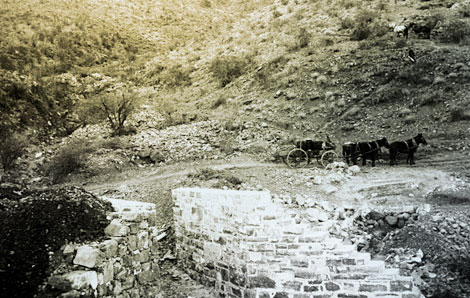 Wagon on road between Mesa and the Roosevelt Dam site, 1904. (Reclamation photograph)
Wagon on road between Mesa and the Roosevelt Dam site, 1904. (Reclamation photograph)(The following abridged text is used by permission from and was written by David Sneed. Additional information on Freight Wagons and other kinds of wagons and carriages can be found at his web site http://www.wheelsthatwonthewest.com.)
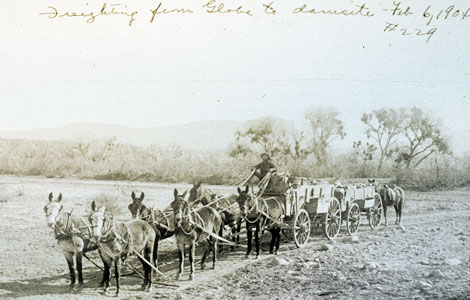 Freight wagons with mule team bringing supplies to the Roosevelt Dam site on the road from Globe, 1904. (Reclamation photograph)
Freight wagons with mule team bringing supplies to the Roosevelt Dam site on the road from Globe, 1904. (Reclamation photograph)They're among the last visible icons of a dramatic bygone era. They stocked the shelves of America's early merchants and traders, kept communication flowing into many of the most remote reaches of the frontier, and helped open the West with the new-found wealth of the nation. These were the Freight Wagons. Built for a single profit-driven purpose, they were designed to take a literal beating while carrying massive amounts of goods, supplies, equipment and raw ore. But, creating these designs was just the first step in a long line of business logistics and challenges. Before the goods and raw materials could arrive at their destinations, they had to overcome the demands of poor and non-existing roads.
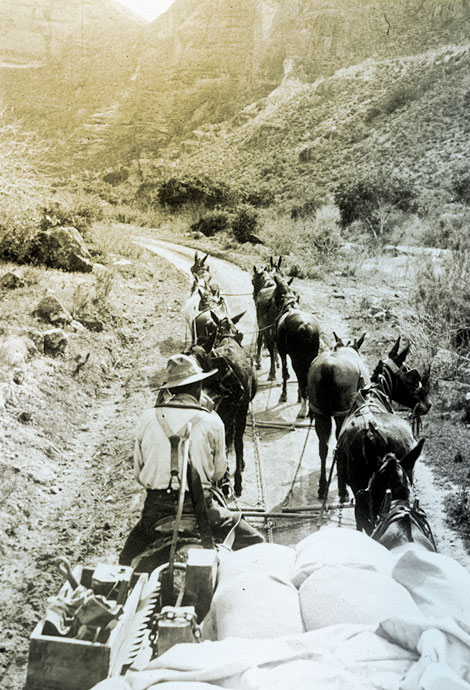 Government freight wagon at foot of Fish Creek Hill on way to dam site, 1907. (Reclamation photograph)
Government freight wagon at foot of Fish Creek Hill on way to dam site, 1907. (Reclamation photograph)
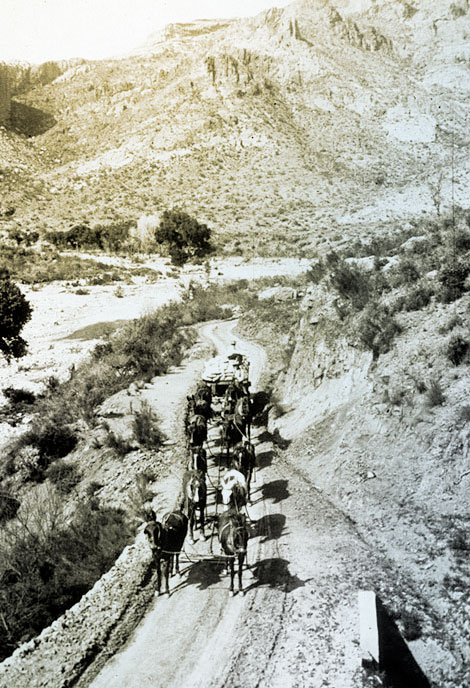 Government freight wagon (previous picture) entering Fish Creek Station, 1907. (Reclamation photograph)
Government freight wagon (previous picture) entering Fish Creek Station, 1907. (Reclamation photograph)Even considering all of the frustrations involved with delivering goods on an international scale today, nothing comes close to the adversity that met America's early western freighting industry. Poorly maintained, steep, narrow dirt paths with axle deep mud, washed out chasms, and an endless array of unforeseen problems were matched only by scenic routes with stomach-curdling drop-offs overlooking deep, mountainous ravines. Crossing mile after mile of secluded country, these slow-moving, heavy wagons were constantly twisted, racked, and pounded along the trails. Adding to the pressure, there were no emergency roadside services to call for help, no regularly-spaced convenience stores to replenish themselves and their teams with food and water, and no protection from bandits and renegades looking to take full advantage of an isolated caravan. It was not an occupation for the faint of heart or the indecisive. Here, strong men with even stronger resolves wore hardened faces and the added savvy of a backcountry survivor. When confronted with cantankerous mules, their vernacular could be explosive and unashamedly colorful. However, they also had a softer side – especially when it came to caring for the animals they spent so much time around. Their livestock and equipment were their primary means of sustenance and that fact was never far from any of the day's thoughts.
The wagons were often loaded using a calculation of about one ton per animal. The big mules were expected to at least pull enough payload to equal their own weight – hence the origin of today's phrase, "Pull your own weight." Big, bold and brawny, the Freight Wagons of the West were true bastions of America's independent spirit. The heavy bracing, tires of double thicknesses, reinforced gears (undercarriages) and oversized wheel construction were typical features of the heaviest vehicles used in the west. From Santa Fe to the Rockies, St. Louis to the Pacific coast, western freight wagons and their teamsters overcame some of the most rugged and unforgiving terrain.
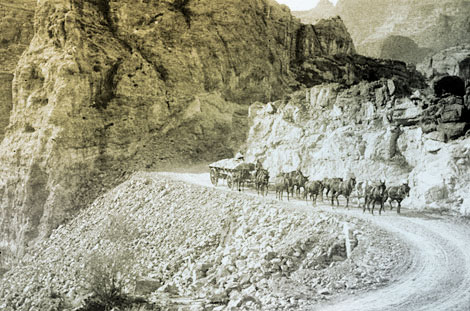 Government freight wagon coming up Fish Creek Hill, 1907. (Reclamation photograph)
Government freight wagon coming up Fish Creek Hill, 1907. (Reclamation photograph)The remote location of Roosevelt Dam required a constant stream of different kinds of wagons to carry supplies, equipment, men, and material to the field camps and the town of Roosevelt. Reclamation photographers, primarily Walter Lubken, captured this heroic effort on film, and the following photographs give a sense of the magnitude of the effort required to supply the men working on the dam and the teamsters who made it happen.
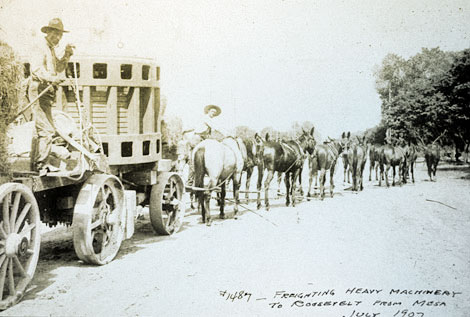 Freight wagon with generator headed for Roosevelt Dam from Mesa, 1907. (Reclamation photograph)
Freight wagon with generator headed for Roosevelt Dam from Mesa, 1907. (Reclamation photograph)
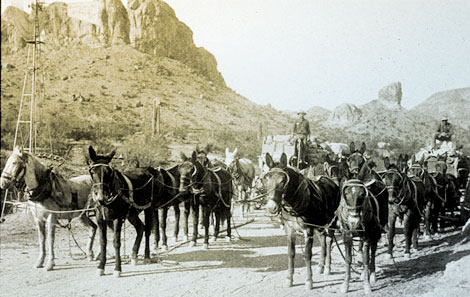 Freight wagon teams at Government Wells on way to Roosevelt Dam, 1907. (Reclamation photograph)
Freight wagon teams at Government Wells on way to Roosevelt Dam, 1907. (Reclamation photograph)
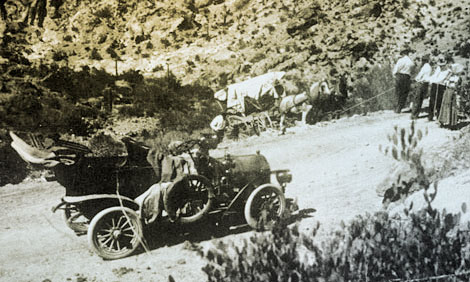 Assisting stage coach on Roosevelt Road, 1910. (Reclamation photograph)
Assisting stage coach on Roosevelt Road, 1910. (Reclamation photograph)
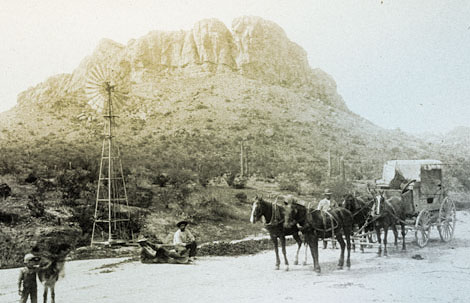 Wagon and horses at Government Wells, n.d. (Reclamation photograph)
Wagon and horses at Government Wells, n.d. (Reclamation photograph)
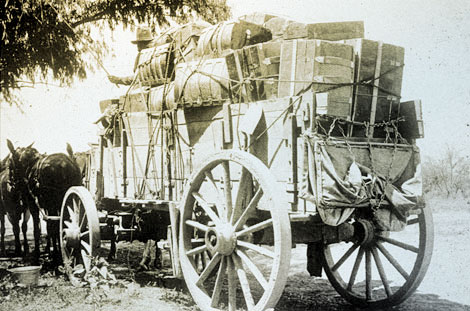 Freight wagon with luggage and baggage belonging to Italian stone masons from Pennsylvania hired to work on construction of the dam, 1906. (Reclamation photograph)
Freight wagon with luggage and baggage belonging to Italian stone masons from Pennsylvania hired to work on construction of the dam, 1906. (Reclamation photograph)
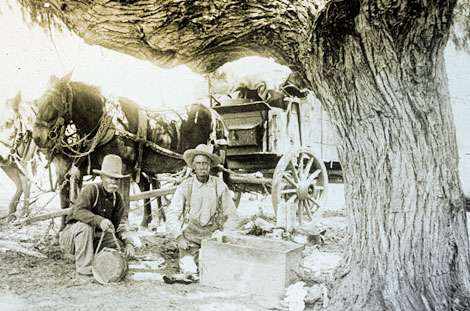 Teamsters preparing lunch at Grapevine Springs en route from Glode to Roosevelt, 1906. (Reclamation photograph)
Teamsters preparing lunch at Grapevine Springs en route from Glode to Roosevelt, 1906. (Reclamation photograph)
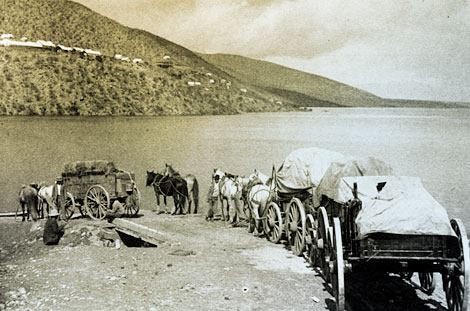 Freight wagons boarding Reclamation Service ferry at Roosevelt, 1910. (Reclamation photograph)
Freight wagons boarding Reclamation Service ferry at Roosevelt, 1910. (Reclamation photograph)
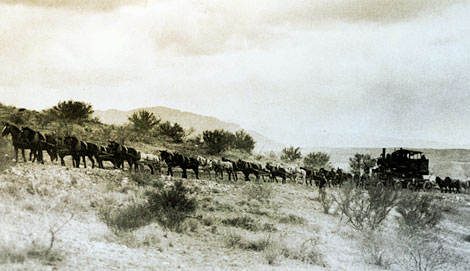 A team of horses and mules pull a small steam locomotive towards the Roosevelt Dam site, No date. (Courtesy of Salt River Project)
A team of horses and mules pull a small steam locomotive towards the Roosevelt Dam site, No date. (Courtesy of Salt River Project)
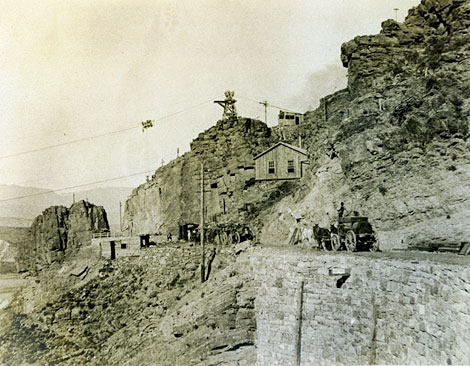 In this photograph, two freight wagons approach the construction site for the Roosevelt Dam, No date. (Courtesy of Salt River Project)
In this photograph, two freight wagons approach the construction site for the Roosevelt Dam, No date. (Courtesy of Salt River Project)